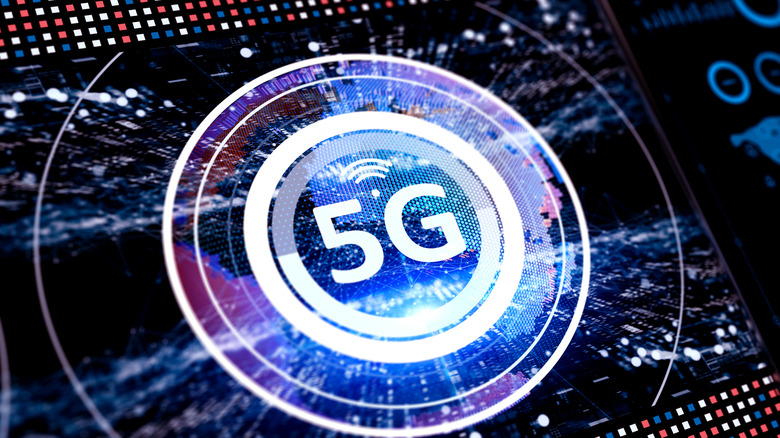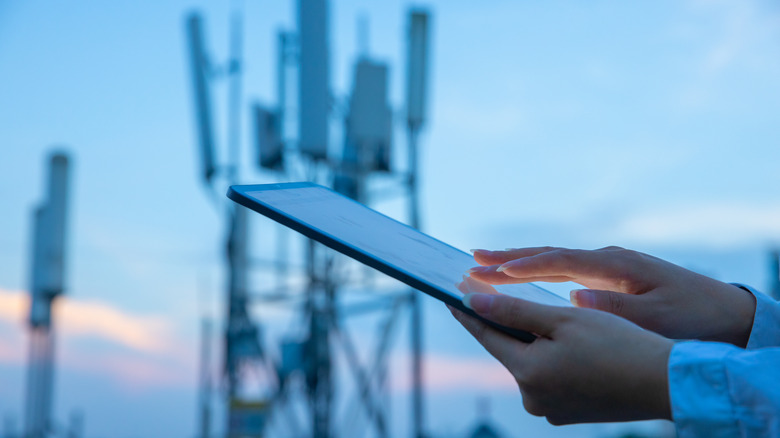Here's What 5G UC Means On Your Smartphone
It's been a few years since 5G phone service hit the scene, and we're already like, "4G who?" With faster speeds and an additional "G," what's not to love? But like previous generations of cellular signals, 5G isn't just 5G. Multiple versions of it are used in different situations, and each of the Big Three wireless carriers in the U.S. has its own different terminology for its networks, just to make things extra confusing.
Back on 4G (and with a Big Four instead of only three), there was HSPA+ and LTE and several other acronyms that may or may not actually mean anything at all. 5G is still so new that you may not have heard about its variations yet, but perhaps you've seen "5G+," "5G UW," or "5G UC" showing up in your phone's status bar. What's the difference between the various forms of 5G service, and what do those acronyms mean?
Bring out the bands
5G comes in three distinct flavors: High-band, mid-band, and low-band. High is the fastest of the three by a significant amount (up to 3 Gbps in ideal conditions), but it also has the shortest range. It's typically found in densely populated areas of big cities or near stadiums or other places where large crowds tend to gather. Low-band has the widest range but the slowest speeds, barely better than 4G. Mid-band is what you're probably connected to most of the time, depending on where you live. It's a balance between speed and range. It tends to be around 500 Mbps, faster than many people's home internet.
The three bands are the same between all of the Big Three carriers. The only difference is what they call them. AT&T calls its mid-band and high-band connections "5G+." Verizon refers to high and mid-band as 5G Ultra Wideband, or "5G UW" for short. Verizon used to only refer to high-band 5G with this moniker but eventually began using it for mid-band as well.
That leaves T-Mobile, which got an early jump on 5G when it purchased Sprint but doesn't offer much high-band 5G currently, so its 5G Ultra Capacity network, better known as "5G UC," primarily refers to mid-band connections. All three providers show a plain "5G" icon on a phone connected to low-band 5G. However, in marketing materials, Verizon calls low-band "5G Nationwide," and T-Mobile refers to it as "5G Extended Range."

